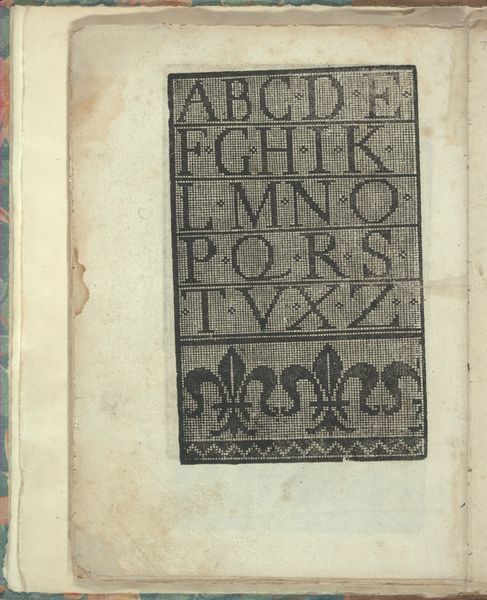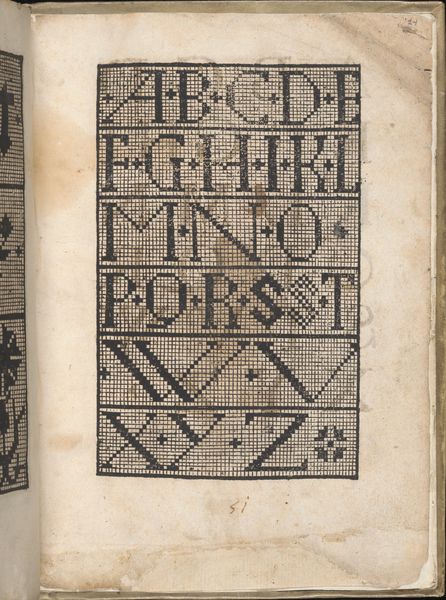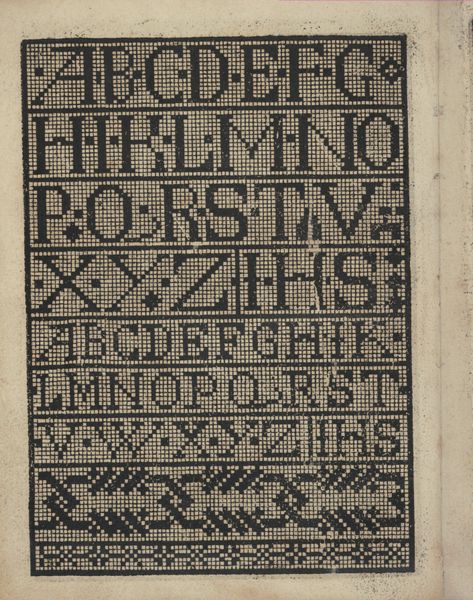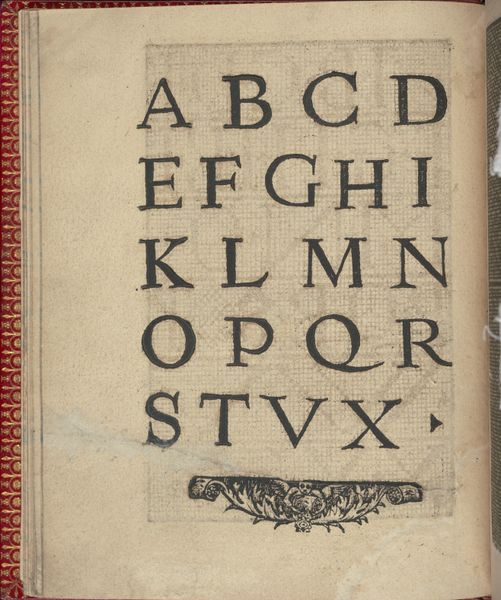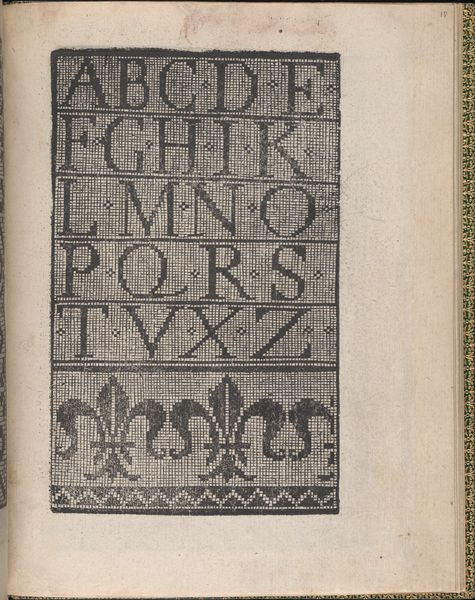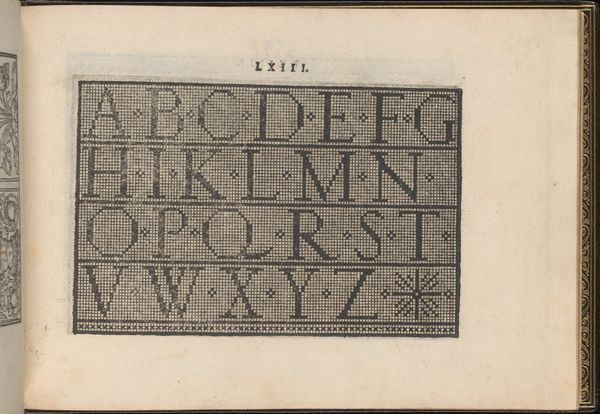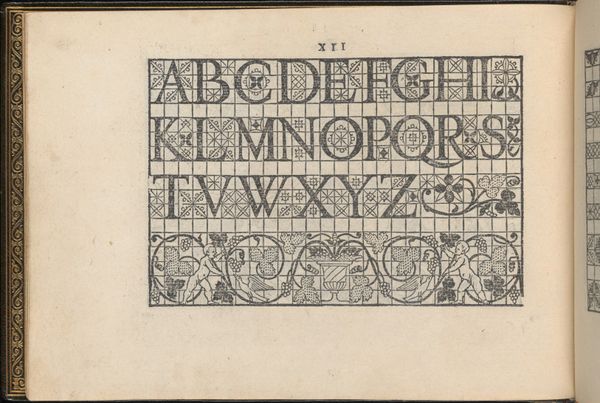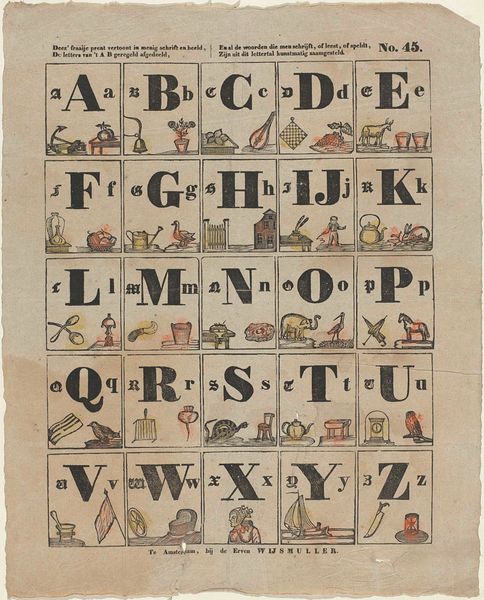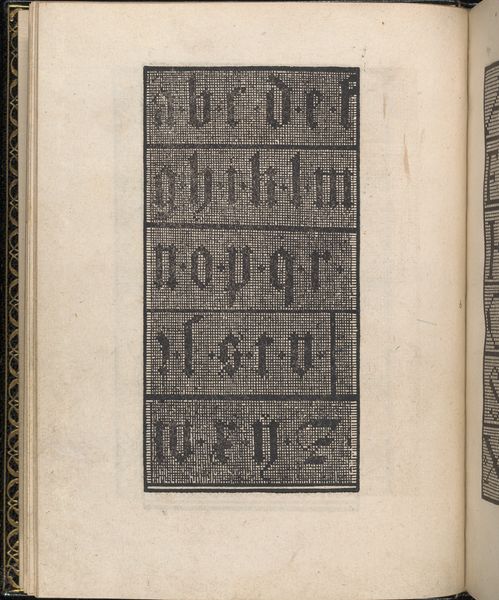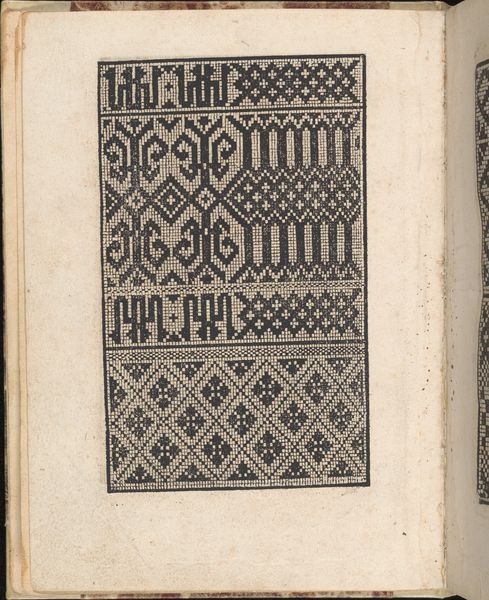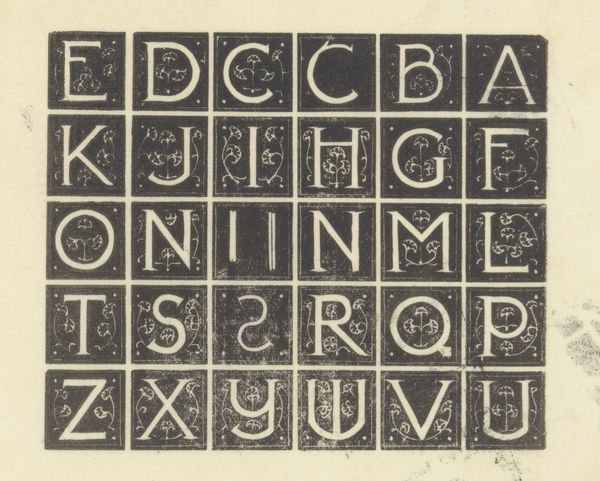
"Alberti Dvreri pictoris et architecti praestantissimi De vrbibvs..." 1535
0:00
0:00
drawing, print, typography, woodcut, engraving
#
portrait
#
drawing
# print
#
book
#
form
#
11_renaissance
#
typography
#
geometric
#
woodcut
#
line
#
northern-renaissance
#
engraving
Dimensions: 78 pp.; H: 13 3/4 in. (35 cm)
Copyright: Public Domain
Editor: So, here we have Albrecht Dürer's *Alberti Dvreri pictoris et architecti praestantissimi De vrbibvs...* from 1535. It appears to be a spread from a book, demonstrating how to construct letters geometrically. The stark black typography on the aged paper really emphasizes precision and order, but also reveals its construction, showing all the marks and underlying drawings that enable their forms. What can you tell me about this print? Curator: Dürer’s meticulous construction of letterforms unveils the labor embedded within typography. Note how the visible geometric underpinnings challenge a singular definition of 'art'. Dürer, traditionally framed as a ‘high artist’, here engages with what could be considered craft – the material process of producing printed text. Editor: That’s interesting. I hadn't considered it blurring that boundary between art and craft so directly. So, what drove Dürer, who we usually see painting or engraving, to dedicate himself to the creation of such detailed letterforms and share these "recipes"? Curator: He's exploring standardization within artistic production, driven by burgeoning printing technology. Think about it – printing enabled mass production and required consistent forms, challenging unique craftsmanship. The book, its very form, embodies these shifting values concerning art's production and consumption. Do you think Dürer was troubled by these changes, or excited by them? Editor: Perhaps a bit of both? He embraces the technology, even masters it, while simultaneously trying to codify and control its aesthetic direction. Seeing this makes me think differently about printed materials, considering the hands and processes involved. Curator: Precisely. It underscores that 'art' isn’t just about the final object, but about the whole network of material practices that bring it into being, questioning value judgements around skill and commodity. Editor: I'm definitely going to be looking at fonts differently from now on.
Comments
No comments
Be the first to comment and join the conversation on the ultimate creative platform.
